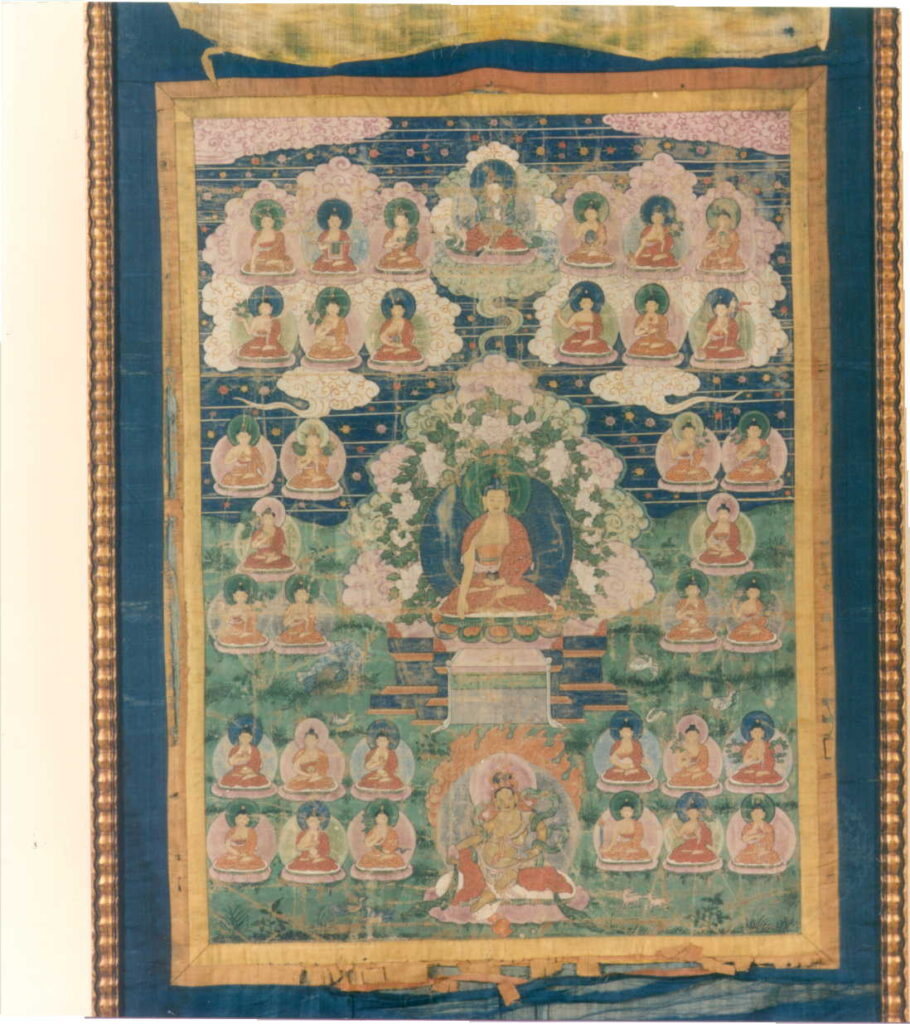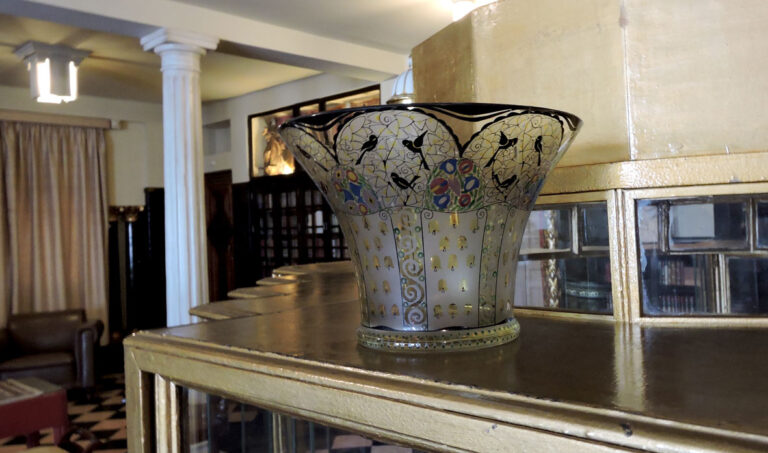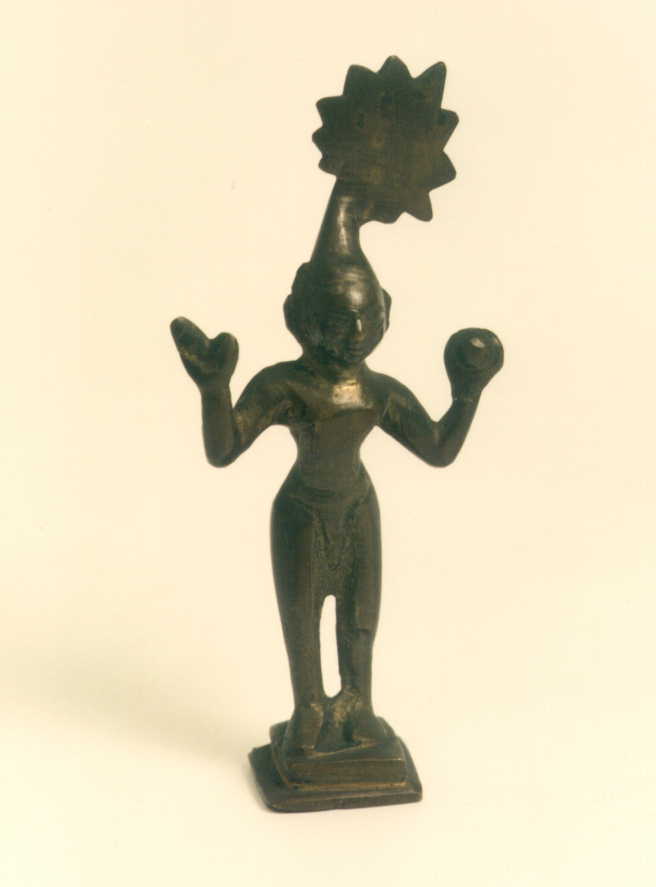BUDDHA AND HIS DISCIPLES
The multi-image painting is intended for the Thirty-Five Buddhas of the Confession, depicting the founder of Buddhism alone, centered on the basic compositional axis. On a stepped architectural structure, Buddha is presented seated on a lotus flower. By the position of his arms, the right one stretched towards the ground and with the fingers of the hand pointing to the earth and the left one folded on his lap and holding with the open palm a small container for monastic use (bhumisparçca mudra), the artist manifests the Buddha’s gesture of putting the earth as a witness of his enlightenment. The image shows in its trace the characteristic features that identify the historical Buddha, such as the elongated lobes of his ears, the sketched smile of the face, the urn or point between the eyebrows and the hair gathered forming the usnisha. He is dressed like a monk, leaving the chest uncovered, and from his head radiates the light of his wisdom and spirituality in the form of semicircular halos that frame the head and body respectively. As a third halo, there is a large floral border that frames and enhances the central image, above his figure and located on a higher plane appears the figure of Mansjuri seated on a lotus flower. In the same vertical central axis, but in the lower plane at the feet of Buddha, a seated figure on a throne in the form of a lotus flower, with the right leg bent and the foot resting on the ground, while the left is collected in a posture called ardhaparyanka. His placid body, as well as the rounded forms of his body, covered by light cloths from the waist down and an undulating mantle, contrast with the serenity and spiritual strength of the Buddha’s image. This character, who shows at his feet a poured amphora, is identified with Vaisravana, the guardian of the North, and also the god of abundance known in Tibet by the name of Jambhala.The type of representation offered by this painting resembles the compositional scheme of a mandala in which the totality is represented from the associations of each of the figures represented. All of them are framed in a rectangle and in the interior they are grouped in vertical and horizontal rectangles, starting from the individual circle of each one of them. Thus the 12 + 1 of the upper plane represent all the directions of the space, being identified the characters by their gestures made with their hands, their attributes and their postures. Also noteworthy in the symbolism of the composition is the stepped structure on which Buddha sits, which can be interpreted as an allusion to Mount Meru, the axis mundi of the Buddhist cosmovision.To show the different spiritual and knowledge stages, the artist places the characters, all seated on a lotus flower, on different backgrounds, using a vegetal composition in the foreground and middle ground in green lathes dotted with birds and animals in white, to be replaced at the top by a cobalt blue background, divided into horizontal layers by white lines and colored dots alluding to the celestial sphere. Finally, and as a finishing touch in the upper corners, it uses a decorative resource of clouds that is repeated as a background for the groups of characters in the upper plane, and by the use of such clear compositional schemes, the use of a floral border of peonies framing the luminous halo of the central figure, a clear Chinese influence can be observed. / Extracted from: Isabel CERVERA FERNÁNDEZ: Fundación Rodríguez-Acosta. Asian Art Collection. Bibliography: RHIE, M.; THURMANN, R.: Wisdom and Compassion. The Sacred Art of Tibet. New York, 1992.




